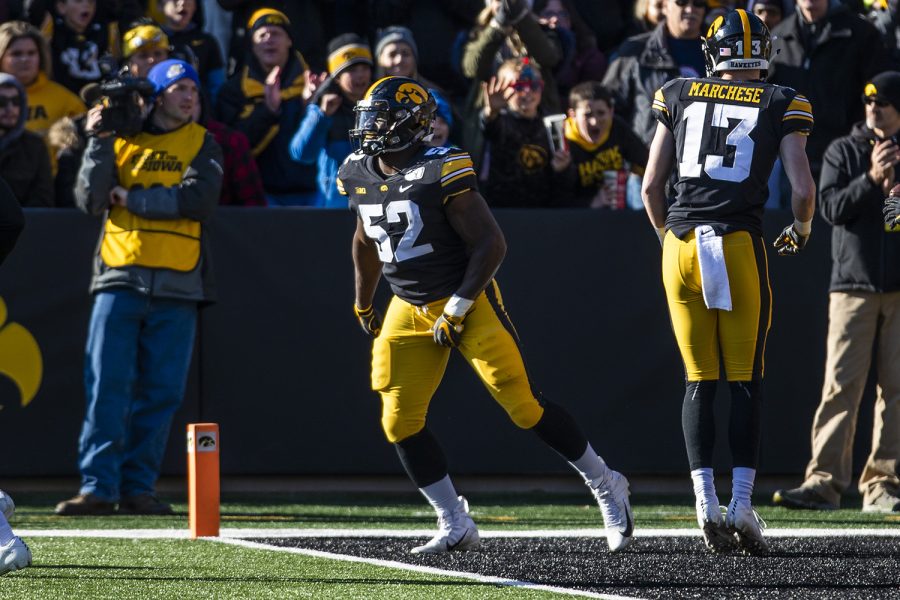Opinion | Big Ten showed it was willing to adapt with new information
After pushback and an advancement in COVID-19 testing, the conference’s members made a unanimous decision to start football next month.
Iowa linebacker Amani Jones runs during the football game against Illinois on Saturday, November 23, 2019. The Hawkeyes defeated the Fighting Illini 19-10.
September 23, 2020
Shortly thereafter, Big Ten Commissioner Kevin Warren announced the conference’s Aug. 11 decision wouldn’t be revisited. Though it’s usually a good idea for someone to stick to their word, as new information regarding testing came out, the Big Ten made the responsible choice of rethinking its decision and coming up with a plan to return to the field as soon as possible.
One day after the U.S. Food and Drug Administration gave emergency approval for a COVID-19 rapid antigen test by Abbott Labs, it was reported by the Milwaukee Journal Sentinel that the Big Ten was discussing starting the season the week of Thanksgiving.
I didn’t take that news seriously at the time, but looking back, I realize that the medical experts in the conference were probably considering options for a return to football.
RELATED: Big Ten calls an audible, will play football season this fall
On Sept. 13, the presidents, chancellors, and the conference return-to-competition task force met to discuss a return-to-play plan that had been presented to them by the medical subcommittees a day prior.
Parents, players, and politicians did push the Big Ten to come back, and only after a lawsuit by Nebraska players did the vote tally from Aug. 11 leak out, which was a big embarrassment to the Big Ten.
In the end, all 14 institutions in the Big Ten acted as one. Whether or not you agree with the decision, the Big Ten did make its choice as one singular entity, rather than 14 separate institutions. Everyone could learn a thing or two from the Big Ten.
Even when it seemed like the conference was the most divided it has ever been, its member institutions acted in unison, regardless of their political and personal beliefs and opinions toward one another. The Big Ten decided to get its football players back on the field as a conference united, not a conference divided.
Looking back, this decision is truly remarkable. During a time of great division in politics, the Big Ten’s member schools decided to put that aside and come together.
But most of all, the conference’s implicit admission that it made the wrong decision after more information emerged is the biggest lesson to be learned. It can be tough for people, much less a group, to admit that they were wrong. People don’t always open their minds to new possibilities, even when new information and data become available.
Though Warren wasn’t responsible for either decision, he did redeem himself by allowing the conference to update its protocols and to vote to return to play.
The commissioner, and the conference as a whole, have regained my respect.






